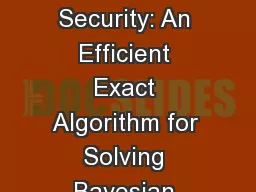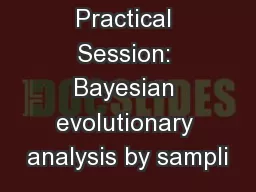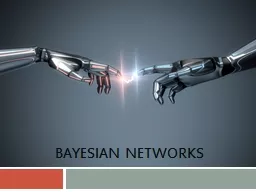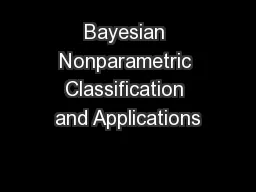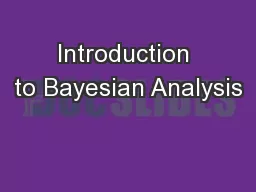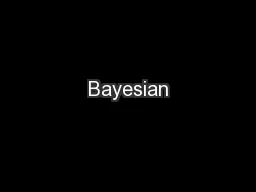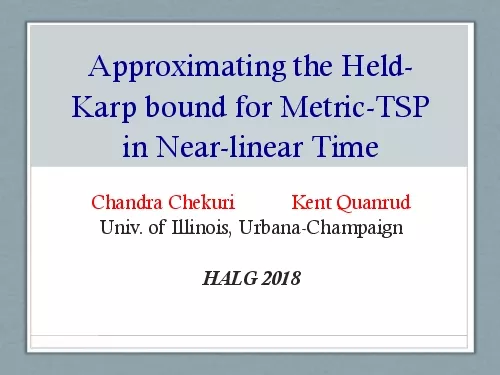PPT-Playing Games for Security: An Efficient Exact Algorithm for Solving Bayesian Stackelberg
Author : natalia-silvester | Published Date : 2018-09-22
Praveen Paruchuri Jonathan P Pearce Sarit Kraus Catherine Ying Liu School of Computer Science University of Waterloo Outline Introduction Problem Definition DOBSS
Presentation Embed Code
Download Presentation
Download Presentation The PPT/PDF document "Playing Games for Security: An Efficient..." is the property of its rightful owner. Permission is granted to download and print the materials on this website for personal, non-commercial use only, and to display it on your personal computer provided you do not modify the materials and that you retain all copyright notices contained in the materials. By downloading content from our website, you accept the terms of this agreement.
Playing Games for Security: An Efficient Exact Algorithm for Solving Bayesian Stackelberg: Transcript
Download Rules Of Document
"Playing Games for Security: An Efficient Exact Algorithm for Solving Bayesian Stackelberg"The content belongs to its owner. You may download and print it for personal use, without modification, and keep all copyright notices. By downloading, you agree to these terms.
Related Documents

